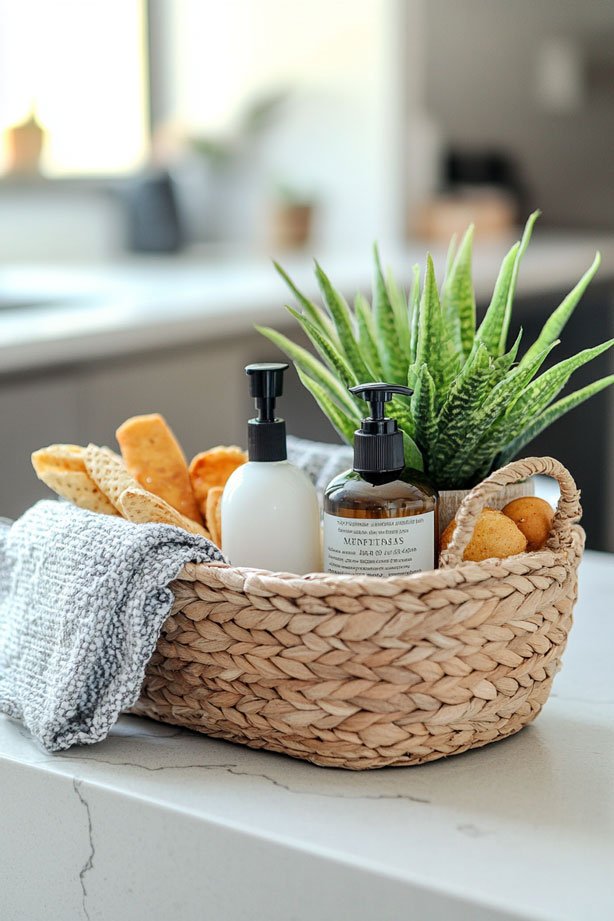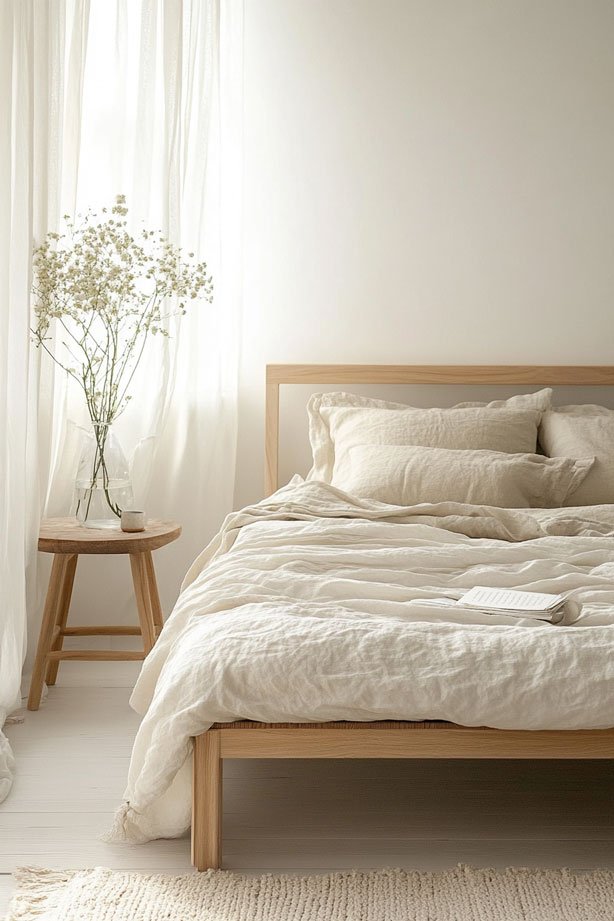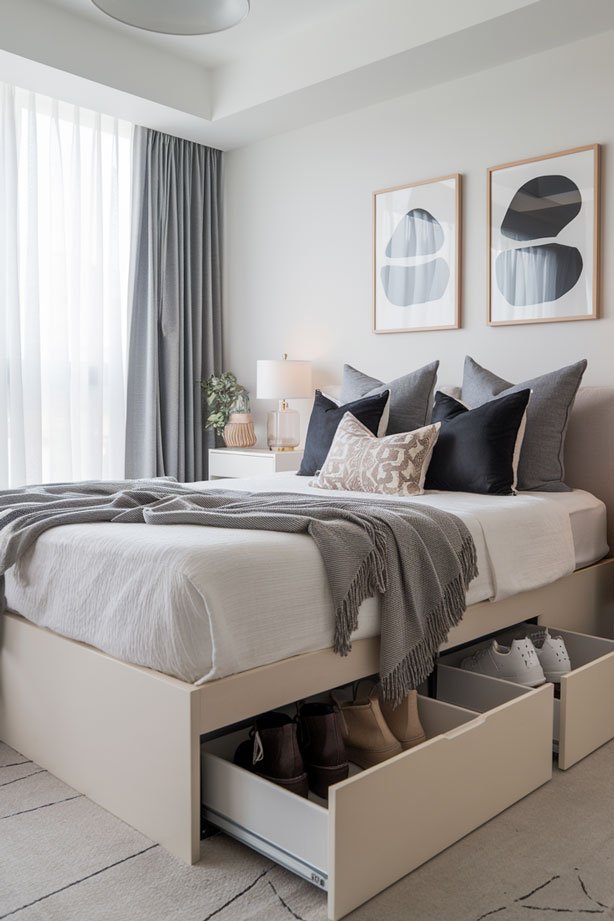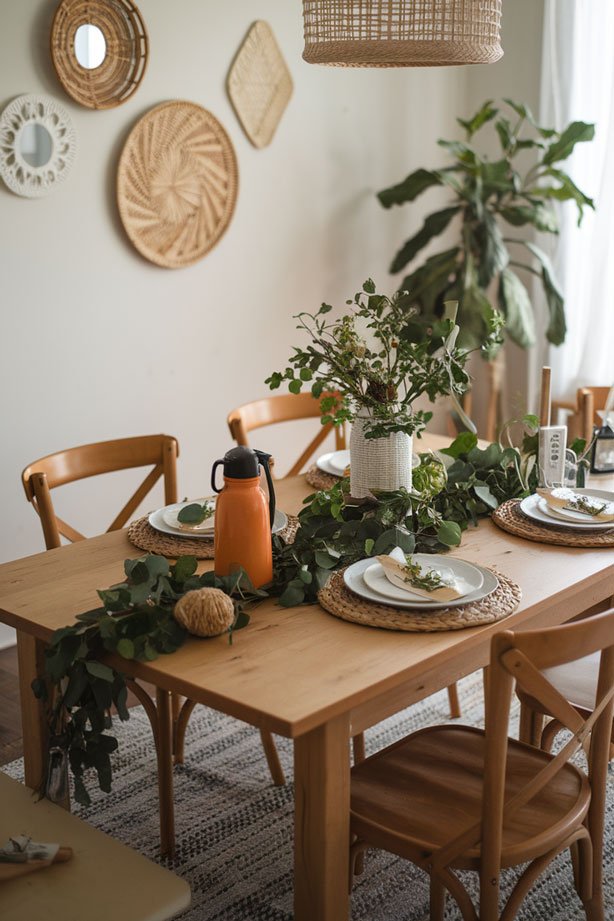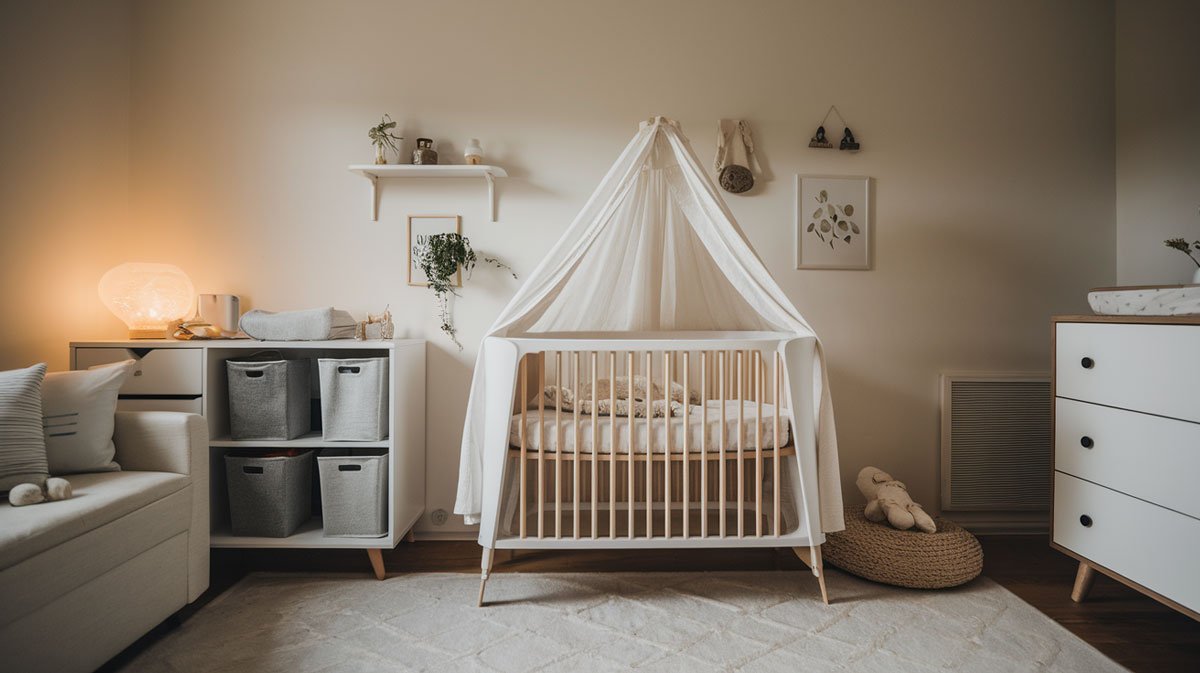
Room sharing with your baby can be a rewarding experience for both parents and infants. It involves having your baby sleep in the same room, but not necessarily in the same bed, which can foster bonding while ensuring safety. Following essential tips can help you create a comfortable environment that promotes healthy sleep patterns for your newborn and peace of mind for parents. This guide outlines the benefits, safety measures, and strategies for a successful room-sharing experience.
What are the benefits of room sharing with your baby?
Why is room sharing recommended by the AAP?
The American Academy of Pediatrics (AAP) recommends room sharing for several reasons, primarily to improve safety and bonding. Sharing a room with your baby reduces the risk of Sudden Infant Death Syndrome (SIDS) by allowing parents to monitor their baby’s sleep closely. It fosters a sense of security for the baby, knowing they’re near their mom or dad, which can lead to better sleep for both. Room sharing creates an environment where parents can quickly respond to their baby’s needs, making nighttime feedings and comforting easier and more efficient.
Moreover, the AAP suggests that room sharing for at least the first six months can significantly lower the risks associated with sleep-related deaths. This practice allows parents to maintain a close connection with their baby, enhancing emotional well-being for both parties. Consequently, the AAP emphasizes that a shared room can help parents feel more in tune with their baby’s sleep patterns and needs, ultimately resulting in a more supportive environment for healthy development.
What are the advantages for a baby’s sleep?
Room sharing can have profound advantages for a baby’s sleep. Babies often feel more secure when they can sense their parents nearby, which can help them fall asleep faster and stay asleep longer. A shared room can create a calming atmosphere, especially when white noise machines or soft lullabies are used to mask household sounds, promoting a peaceful sleep environment. Additionally, room sharing allows parents to quickly attend to their baby’s needs, whether it’s a feeding or a diaper change, without the disruption of moving to another room.
Furthermore, having a consistent sleep environment with familiar sounds and scents can contribute to better sleep quality. Newborns often wake frequently, and being in close proximity can reassure them and help them settle back to sleep more easily. This close connection can also facilitate the development of healthy sleep cues, making it easier for babies to learn when it’s time to sleep. In essence, room sharing can enhance a baby’s overall sleep experience, leading to a more restful night for the entire family.
How does room sharing affect parental sleep?
While room sharing can benefit a baby’s sleep, it also influences parental sleep, often in both positive and negative ways. On one hand, having the baby close by allows parents to respond quickly to wake-ups, which can lead to shorter periods of disrupted sleep. This arrangement can minimize the time spent getting up and moving to another room, ultimately allowing for more restful nights. Parents often report feeling more at ease knowing they can check on their sleeping baby without getting out of bed.
On the other hand, some parents may find it challenging to sleep soundly with the sounds of a newborn in the same room. Babies often make noise during sleep, which can disturb parental rest, especially if they are used to a quieter environment. To mitigate this, using a room divider can help create a sense of separation while still allowing for room sharing. Overall, while there may be challenges, effective strategies can help parents adapt to sleeping in a shared space with their baby.
How to create a safe sleep environment in a shared room?
What are the safe sleep guidelines for a newborn?
Creating a safe sleep environment when room sharing with your baby is crucial for ensuring their well-being. The AAP provides specific guidelines that should be followed to reduce the risk of sleep-related incidents. Babies should always be placed on their backs to sleep, which is known as the “back to sleep” approach. The sleep surface should be firm and flat, and parents should avoid using soft bedding, pillows, or stuffed animals in the crib or bassinet to prevent suffocation risks. It’s also recommended to keep the baby’s sleep area free from clutter and to ensure proper ventilation in the room.
Moreover, parents should consider using a bassinet or crib that meets safety standards. Products from reputable brands like IKEA or those certified by the Juvenile Products Manufacturers Association (JPMA) are excellent choices. Ensuring that the crib or bassinet is not placed near any cords or window blinds is also important for safety. By adhering to these safe sleep guidelines, parents can create a secure environment for their newborn, allowing both baby and parents to feel more confident and relaxed during bedtime.
How to set up a bassinet or crib for room sharing?
Setting up a bassinet or crib for room sharing requires careful consideration to ensure safety and comfort. First, it’s essential to choose a location that is free from hazards like windows, cords, or furniture that could pose a risk. The bassinet or crib should be placed in a well-ventilated area to maintain a comfortable temperature, ideally between 68 to 72 degrees Fahrenheit. Ensuring that the crib mattress fits snugly and is firm, allows for a safe sleeping environment for your baby. Blankets should be avoided, and instead, consider using sleep sacks or swaddles to keep the baby warm.
Additionally, consider incorporating a white noise machine to help mask any household sounds that might disturb the baby’s sleep. This can create a soothing background noise that promotes relaxation. Positioning a nightlight nearby can also aid parents during nighttime feedings and diaper changes without disrupting the baby’s sleep. By taking these steps to set up a safe and comfortable sleeping area, parents can ensure that their shared room is conducive to restful nights for both themselves and their baby.
What are the recommendations for avoiding SIDS?
To prevent Sudden Infant Death Syndrome (SIDS) while room sharing, parents should follow specific recommendations that emphasize safe sleep practices. First and foremost, always place the baby on their back to sleep, as this position significantly reduces the likelihood of SIDS. The sleep surface should be a firm mattress, free of any soft bedding, pillows, or toys that could obstruct the baby’s breathing. Furthermore, room sharing should not involve co-sleeping in the same bed, as this practice carries additional risks.
Maintaining a smoke-free environment is also crucial, as exposure to smoke increases the risk of SIDS. Parents should avoid overheating their baby by dressing them appropriately for the temperature and keeping the room comfortably cool. Regular prenatal care and ensuring that the baby receives immunizations can further reduce the risk. By adhering to these guidelines, parents can create a safer sleep environment in a shared room, enhancing the well-being of their newborn while promoting peace of mind for themselves.
What are effective tips for a bedtime routine while sharing a room?
How can you establish a consistent bedtime routine?
Establishing a consistent bedtime routine is vital for helping your baby feel secure and ready for sleep, especially when sharing a room. A predictable sequence of activities can signal to your baby that it’s time to wind down. Start with calming activities, such as a warm bath, gentle massage, or reading a story. These rituals can help your baby relax and prepare for sleep. Aim to start this routine around the same time each night to create a sense of consistency.
Incorporating dim lighting and soothing sounds, such as soft music or white noise, can further enhance the calming atmosphere. This helps both the baby and parents transition into sleep mode effectively. Once the routine is established, it becomes easier for the baby to associate these activities with bedtime. Ultimately, a consistent bedtime routine fosters better sleep habits and makes it smoother for both the baby and parents during the nighttime hours.
What techniques help a baby sleep through the night?
To encourage a baby to sleep through the night while room sharing, parents can employ various techniques that promote healthy sleep habits. One effective method is establishing a consistent bedtime routine, as mentioned earlier, which can help signal to the baby that it’s time to sleep. Additionally, ensuring that the baby is fed and changed before bedtime can minimize wake-ups during the night. It’s essential to create a comfortable sleep environment with a suitable temperature and adequate lighting to support restful sleep.
Another helpful technique is to allow the baby to self-soothe when they wake up. Instead of immediately picking them up, give them a few minutes to see if they can settle back down on their own. This approach can teach the baby how to fall back asleep without relying on parental intervention. For some parents, using sleep training methods can also be beneficial, depending on the family’s comfort level. By incorporating these techniques, parents can increase the likelihood of their baby sleeping through the night.
How to manage wake-ups and nighttime feedings?
Managing wake-ups and nighttime feedings while room sharing can be a challenging but manageable task. The key is to remain calm and organized during these moments. When your baby wakes, try to assess what they need—this could be a diaper change, feeding, or simply comfort. Keeping essential items like diapers, wipes, and a feeding bottle within arm’s reach can streamline the process and minimize disturbances. Dim lighting is advisable to avoid fully waking the baby during these interactions.
If your baby is hungry, feed them without too much stimulation. Once the feeding is complete, gently place them back into their crib or bassinet while they are still awake, allowing them to learn how to fall asleep independently. Moreover, maintaining a consistent approach to nighttime wake-ups can help the baby understand what to expect, making the process smoother for both baby and parents. Over time, this consistency can contribute to longer stretches of sleep for everyone involved.
How to transition from room sharing to a separate nursery?
When is the right time to move a baby to their own room?
Deciding when to transition your baby from room sharing to their own nursery can vary among families, but several factors can guide this decision. The AAP suggests that room sharing should continue for at least six months to reduce the risk of SIDS. However, signs that your baby might be ready for their own room include consistent sleep patterns, the ability to self-soothe, and an increase in mobility. If your baby is frequently waking due to disturbances from older siblings or parents, it may also be a sign that they need their own space.
Moreover, consider the baby’s age and developmental milestones. Typically, many families find that by the time their baby is around six to twelve months old, they may be ready for a separate sleeping environment. Each child is unique, so it’s essential to assess your baby’s readiness based on their individual sleep cues and behavior. Ultimately, the right time for transitioning will depend on what feels comfortable for your family.
What strategies can ease the transition?
Easing the transition from room sharing to a separate nursery can be a smooth process with effective strategies. Start by familiarizing your baby with their new room while still maintaining the comfort of your shared space. You can begin by allowing them to take naps in their nursery during the day, gradually helping them adjust to the new environment. This approach will allow them to become accustomed to the sounds and smells of their new room without the pressure of a full overnight stay.
Additionally, consider introducing a transitional object, such as a favorite blanket or stuffed animal, to provide comfort as they sleep alone. Keeping a consistent bedtime routine during this transition is also essential; it helps to reaffirm the sleep cues they have learned while room sharing. Lastly, reassure your baby with gentle words and calmness, making the transition feel safe and secure. Over time, these strategies can help your baby adapt to their own nursery with ease.
How to prepare an older child for sharing a room with a new baby?
Preparing an older child to share a room with a new baby requires thoughtful communication and planning. Start by discussing the changes that will occur with the arrival of the new baby, emphasizing the excitement of having a sibling. Encourage your older child to express their feelings and concerns about the transition. This open dialogue can help them feel involved and valued during this time of change. Consider involving them in setting up the shared room, allowing them to choose decorations or arrange furniture, which can foster a sense of ownership.
It’s also beneficial to establish clear boundaries regarding the shared space. Explain the importance of respecting the baby’s sleep schedule and encourage your older child to be gentle and quiet when the baby is sleeping. Setting up a reward system for positive behavior can also motivate your older child to embrace the new arrangement. By combining communication, involvement, and clear expectations, you can help ease the transition for both your older child and the new baby.
What are common challenges of room sharing and how to overcome them?
How to deal with noise and disturbances during sleep?
Noise and disturbances can present challenges in a shared sleeping environment, but there are effective strategies to mitigate these issues. Using a white noise machine can help mask household sounds, creating a soothing auditory backdrop that promotes sleep for both the baby and parents. Consistent bedtime routines can also signal to everyone in the household that it’s time to wind down, fostering a quieter atmosphere as bedtime approaches. Additionally, setting designated quiet hours can help establish boundaries for noise, ensuring everyone respects the sleep environment.
Parents can also consider using soft lighting and maintaining a calm demeanor during nighttime interactions. If there are other children in the house, it’s essential to communicate the importance of being quiet while the baby is sleeping. This can be coupled with engaging older siblings in activities during bedtime hours to minimize disruptions. By taking these proactive steps, families can create a more peaceful shared sleeping environment that supports everyone’s rest.
What to do if the baby wakes the older child?
If a baby wakes an older child during the night, it can be a frustrating situation for parents. The first step is to remain calm and assess the situation. If the baby is crying, try to soothe them with gentle sounds or by picking them up briefly, while ensuring the older child remains undisturbed. If the baby is not in immediate distress, it may be helpful to let them settle on their own for a few moments to avoid waking the older child further.
Additionally, consider setting up a comfortable sleep environment for the older child, such as providing them with earplugs or a white noise machine to help drown out any baby noises. Establishing a consistent bedtime for both children can also help minimize disruptions. If necessary, parents can take turns attending to the baby during nighttime wake-ups to lessen the impact on the older child’s sleep. By implementing these strategies, families can create a more harmonious sleeping arrangement that respects the needs of both children.
How to manage a small room sharing situation?
Managing a small room sharing situation requires careful planning and organization to ensure comfort for everyone involved. Utilizing space-saving furniture, such as a pack n play or a compact bassinet, can help maximize available space while providing a safe sleeping area for the baby. Consider using a room divider to create a visual separation between the sleeping areas, which can help both the baby and parents feel more comfortable in a shared environment.
Effective organization is also essential in a small room. Keep baby essentials, such as diapers and clothing, easily accessible in storage bins or baskets to minimize clutter. This will help maintain a tidy space, making it easier for parents to navigate during nighttime routines. When selecting furniture, opt for multi-functional pieces that can serve dual purposes, such as a dresser that can also function as a changing table. By implementing these strategies, families can create a comfortable and functional shared space that meets the needs of both baby and parents.
How to sleep train while room sharing?
What methods are best for sleep training a baby in a shared room?
Sleep training a baby in a shared room can be effectively achieved through several methods tailored to the unique environment. One popular approach is the “Ferber Method,” which involves allowing the baby to cry for progressively longer intervals before checking in on them. This method helps teach the baby self-soothing techniques while also allowing parents to provide comfort without picking them up. Another effective strategy is the “Chair Method,” where parents gradually move further away from the baby’s crib each night, allowing the baby to learn to fall asleep independently.
Additionally, incorporating a consistent bedtime routine is crucial for promoting successful sleep training. This routine can include calming activities such as reading a book or singing a lullaby, signaling to the baby that it’s time to sleep. It’s important for parents to remain patient and consistent throughout the sleep training process, as it may take time for the baby to adjust. With dedication and the right methods, parents can effectively sleep train their baby while sharing a room, leading to improved sleep for everyone.
How can you ensure both children get adequate sleep?
Ensuring that both a baby and an older child get adequate sleep while room sharing can be a delicate balance. One effective strategy is to establish separate sleep schedules that accommodate the needs of both children. For example, consider putting the baby down for their first nap during the older child’s quiet time or scheduled rest. This can help create a peaceful environment for both children to rest without disturbing one another. Additionally, maintaining a consistent bedtime routine for both children can signal to them when it’s time to sleep.
Using a white noise machine can also help mask any noise from one child waking or moving about, allowing the other to remain undisturbed. Moreover, parents should prioritize sleep training techniques that encourage independent sleep for both children. This approach will help each child learn to self-soothe and fall asleep on their own. By implementing these strategies, parents can foster an environment where both children can achieve restorative sleep, contributing to their overall well-being.
What are the signs your baby is ready for sleep training?
Recognizing the signs that your baby is ready for sleep training is essential for a successful transition. One of the key indicators is consistent sleep patterns; if your baby is frequently waking at similar times during the night, it may indicate readiness for training. Additionally, if your baby is able to self-soothe by sucking on their thumb or finding comfort in a transitional object, this can be a positive sign. Another indicator is if your baby shows resistance to being held or rocked to sleep, suggesting that they are ready to learn how to fall asleep independently.
Moreover, if your baby is around four to six months old, they are likely developmentally ready for sleep training. At this age




